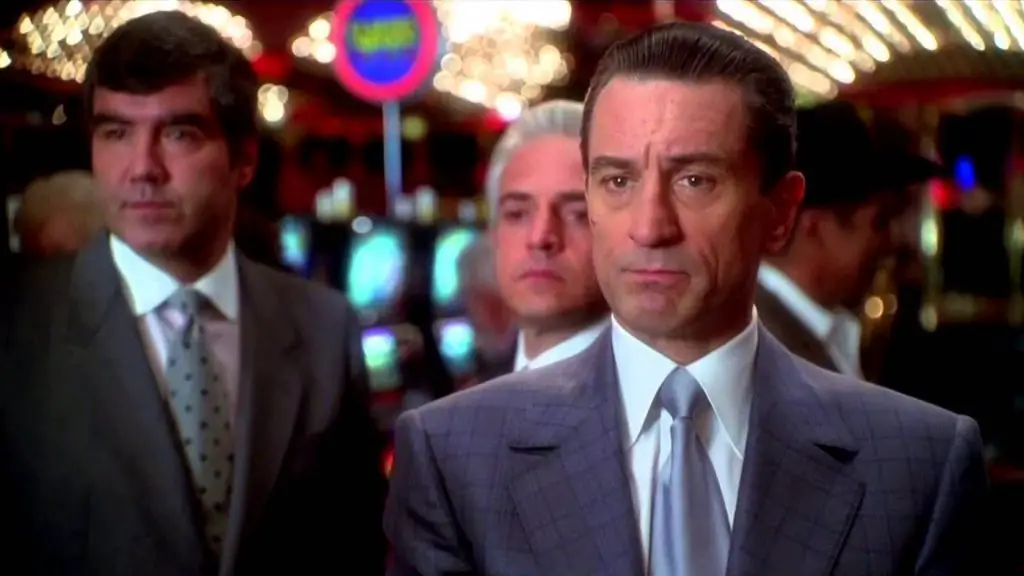
It’s become somewhat of a cliché or more of a sardonic, half-serious suggestion, really, made by filmmakers desperate to make a movie but stymied by the high costs involved.
“What we should do,” these filmmakers venture, sheepish, yet hoping that someone might take them seriously and come up with some catchy idea, “is make a film that all takes place outdoors and stars only three or four characters. And we’ll shoot it on digital video to really make it cheap!” they add.
While few ever go through with this Hail Mary scheme, realizing, perhaps, that there are very few ideas out there that satisfy this no-frills criteria yet have enough narrative meat to flesh out a feature length skeleton. Occasionally someone will come along and pull a decent, or at least innovative film from this bare bones approach, such as was the case with “The Blair Witch Project.” More often than not, however, such films collapse simply because there’s nothing there, such as in the case of Gus Van Sant’s godawful “Gerry.”
Director Steve Mahone eases through this Spartan budgetary and narrative landscape with “Radiant,” teasing a mildly profound mediation out of a snail’s paced thriller…if the viewer can stay awake long enough to digest it all.
Each plagued, so to speak, by different, as yet undiagnosed diseases or afflictions, Ray (Matthew Tompkins), Patricia (Sandy Fish), Michael (Jeremy Schwartz) and Molly (Laurel Whitsett) have all gravitated to Teller Blackpoole’s secluded desert compound. Blackpoole (Jim Covault) is a renegade viral engineer who’s working to design the perfect virus, a “friendly” parasite that will live and grow inside the human body, while destroying all the evil viruses that wreak havoc on humans such as his four subjects. Not surprisingly, the government, less than thrilled with the thought of unregulated potentially lethal killer microbes being cooked up in their midst, seeks to shut down Blackpoole’s viral still. To everyone’s considerable dismay, however, the gunshot that kills one of the test subjects during the government’s disastrous raid first passes through a case carrying vials of viruses, releasing them into the air and infecting the three surviving patients.
During their ensuing escape from Blackpoole’s compound, the three survivors stumble across Ed (James Cable), a fellow patient whose job it’s been to tend to the dogs Blackpoole uses as test subjects. Convinced that staying means certain capture and a life spent trapped inside a government plastic bubble, Ed joins the three infected fugitives on a desperate flight into the desert.
While all this may sound like a rousing action picture, and indeed, there are some few moments of high noon drama, “Radiant” is perhaps the most internal action movie ever made. Even the infection is entirely internal – which saves on the effects budget! — with no visible signs of transformation, except for the victims’ tendency to drool excess water out their mouths while sleeping and to throw up. A lot.
Really, the only way to gauge what’s going on in this film, more so than through the sparse dialogue littered throughout, is to listen carefully to Ed’s soothing, often poetic narration, for here is where the “action” is.
Combined with the (deliberately, I assume) oversaturated and pixelated video and the dreamy dissolves used to link the parallel, if not always linear event editing, the effect is mesmerizing in a weird way, and compelling, if not exactly riveting. It’s almost as if Mahone deliberately set out to make a cerebral, slo-motion version of “Dawn of the Dead.”
Whatever the intent, “Radiant” succeeds in doing something intriguing, intelligent, and unique with this no-frills foray. To be sure, at 107 minutes in length, the film could have used some serious trimming. At the very least, some of that run-time could have been used to show us the three full screens of expository information we’re spoon fed at the outset of the film.
Still and all, with its unique visual style and deliberate pacing, “Radiant” has boldly staked its claim in the parched earth of EXT: DAY filmmaking.
